Inside: Homeschool supply list for new homeschoolers. Each of the supplies on this list are essential when you’re just starting out. Included is a list of homeschool reference texts you can acquire all at once or as your budget allows.
Remember getting your school supply lists in the mail growing up? Best.piece.of.mail.ever.
Although I’m pretty sure I loved those supply lists a lot more than my parents did, since they were the ones paying for all those supplies!
Going to Staples or Walmart with my mom and my brother to shop for school supplies was without a doubt one of my very favorite things about school.
There’s nothing quite like the smell of new notebooks and crayons and erasers and…you get the idea. I know I’m not the only one who adored new school supplies.
The good news? Just because you homeschool doesn’t mean you have to miss out of the joy of fresh school supplies!
You get to make a homeschool supply list of your very own…but what to put on it? What do you really need?
You Might Also Like: How to Start Homeschooling – A Minimalist Guide for Beginners
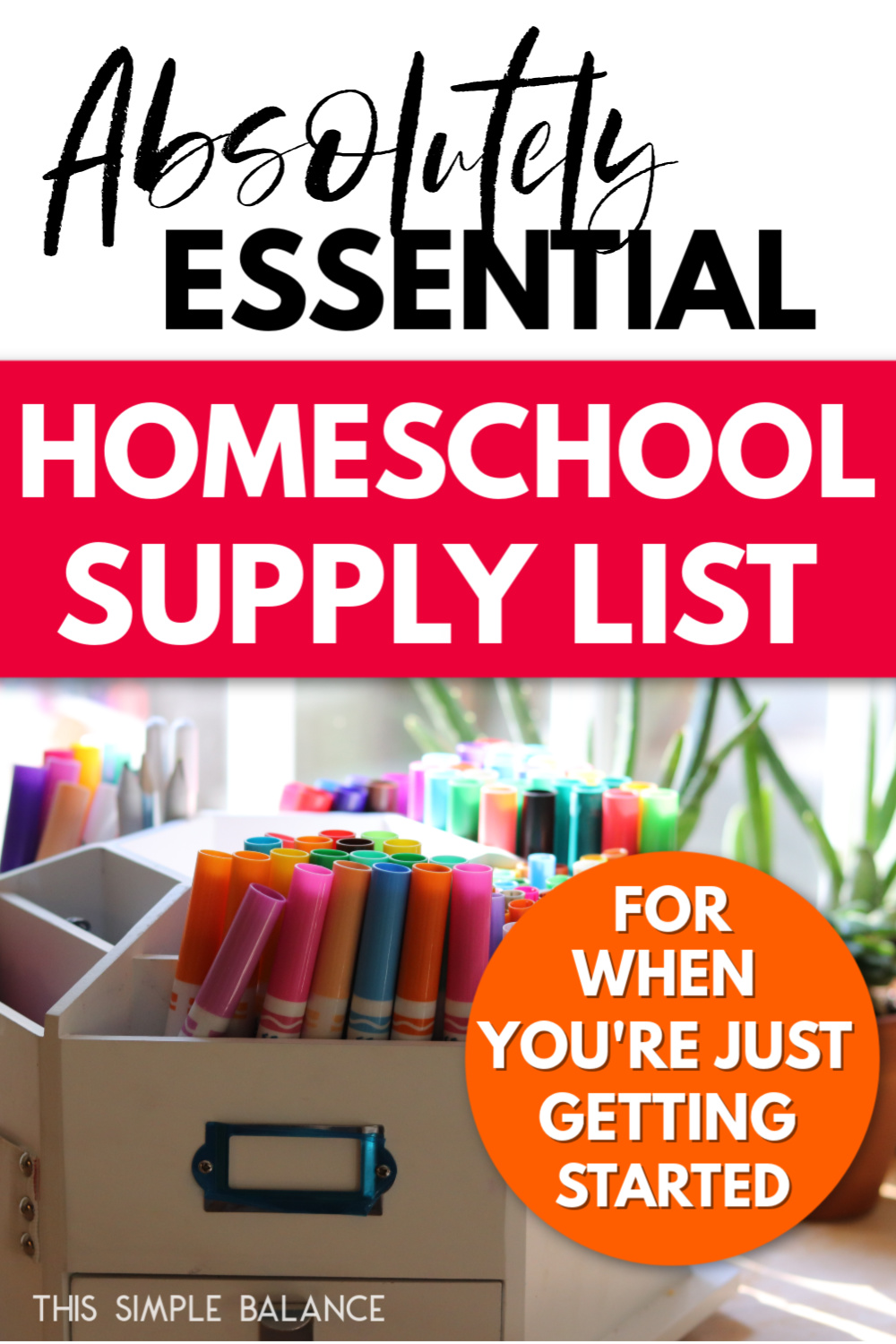
Homeschoolers Can Get In On The Joys of School Supplies, Too
Oh, the joys!…and the decisions. Knowing what to buy when you’re new to homeschooling can be SO confusing.
But guess what? You really don’t need that much to homeschool!
Everything on this homeschool supply list is what I consider your basic needs when you start homeschooling at the elementary level.
I’m a minimalist, and we unschool. So rest assured, this is a no-fluff list. These are what I consider must-have homeschool supplies every new homeschooler needs.
As you grow more confident in your homeschool style and you figure out what types of activities make you and your kids light up (or on the other hand, which ones make you want to cry), you can add to this list the homeschool supplies that bring you joy.
(I didn’t include snacks on this list, but the extra food you’ll need because you homeschool? It’s no joke! There’s a LOT of truth behind all those “homeschooled kids are hobbits” memes!)
Onto the homeschool supply list!
Related: 20+ Genius Homeschooling Tips for Beginners
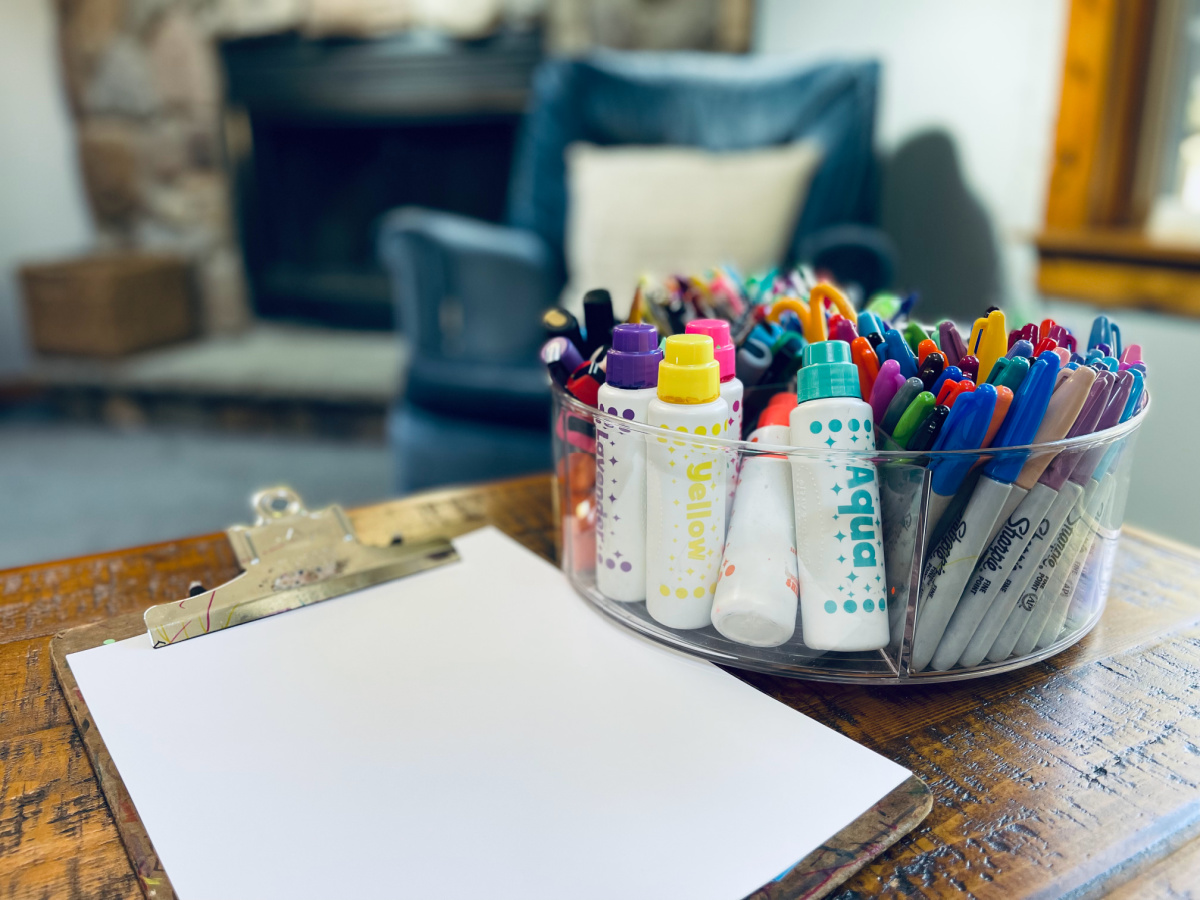
Homeschool Supply List: Just the Basics
THIS POST PROBABLY CONTAINS AFFILIATE LINKS. AS AN AMAZON ASSOCIATE, I EARN FROM QUALIFYING PURCHASES. YOU CAN READ OUR FULL DISCLOSURE POLICY HERE.
I recently went back over this list to see if it still rings true after we transitioned from relaxed homeschooling to unschooling. Most of it does!
I did add some essentials I can’t believe I forgot, like a library card. But any new homeschooler with elementary aged kids, no matter your homeschool style, will benefit from this supply list.
I do most of my homeschool supply shopping on Amazon and consider my Amazon Prime membership money VERY well spent, especially now that we live rurally and are 25-30 minutes away from a Target or Walmart.
If you don’t already have a Prime membership, you can try Amazon Prime for 30 Days free! I legit almost put a membership on the list of homeschool supplies – I use it weekly.
Note: I used to offer a free printable list, but this is really such a short list that I didn’t think it was necessary. I’m sorry if you came here counting on a printable list!
1. Library Card
We use our library card all day, every day. From physical books at the library every week to Kindle and audiobooks daily.
In my opinion, you absolutely cannot homeschool without a library card. It’s the most important tool in your homeschool “tool belt”.
We actually stopped spending our homeschool budget on books for the most part, and use the library almost exclusively now.
Related: Homeschool Parents? Maybe Marie Kondo Was Right About the Books
2. Internet Connection
I’ve heard of families who homeschool without the internet…but I just think, how? HOW?!
Especially if you are going the unschooling route, you will use the internet all day, every day.
There are programs to help access internet if cost is a concern. Here is a great article about 9 ways to get free internet.
3. Computer, Laptop or Tablet
Again, accessing the internet is going to be so crucial for your homeschool journey!
What you use to access the internet is up to you. You could buy a cheaper tablet like Amazon Fire tablets, or you could go the pricier route with an iPad (we think it’s worth the investment!).
My kids have used their iPads for all kinds of apps over the years, from Youtube (so.much.learning) to games to things like Reading Eggs and Stack the States and Scratch, Jr.
As homeschooled kids get older, a home computer is probably essential. But my younger children primarily use tablets, and only use computers at our local library.
4. A Printer

I lived without a printer for two years. This year, I caved and purchased a fairly basic HP printer with copying, scanning and printing abilities.
It’s opened up amazing opportunities for so many different projects, including my kids starting their own business!
I intentionally purchased an HP printer (we have THIS one) because of the HP instant ink program.
What’s HP instant ink? It’s absolute genius in my opinion. You sign up based on how many pages a month you anticipate printing.
They track via wireless your ink levels. When they’re low, they automatically mail you new cartridges.
Best part? It’s only $4.99 a month, set it and forget it.
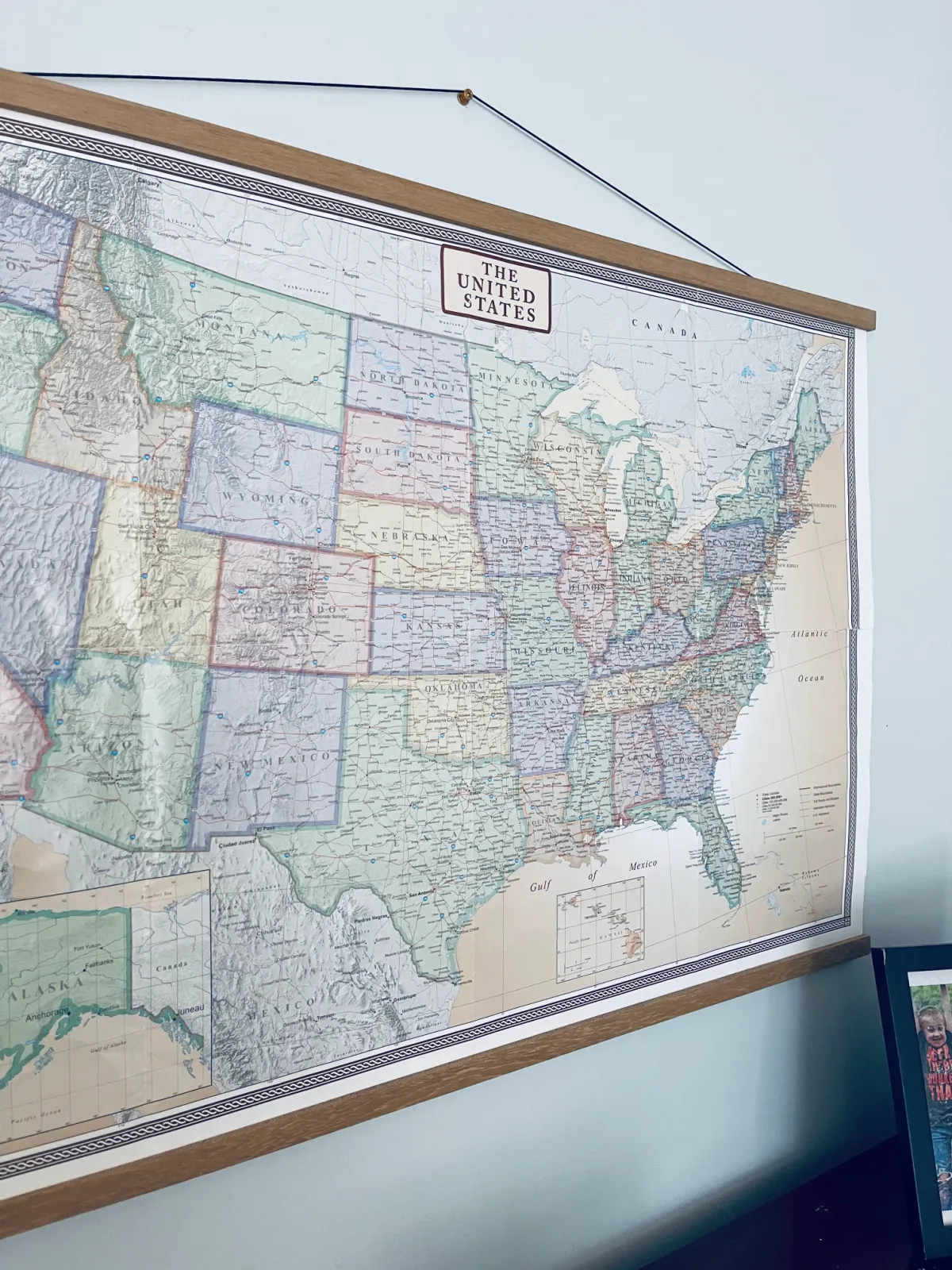
5. Wall Map(s)

What homeschool would be complete without a map? We currently have two, one US map and one World map.
Any decent-sized wall map will do.
Our world map is similar to THIS one. Our US map is THIS 24×30 version – I love the colors!
We used poster hangers to hang both.
6. Globe

The globe is another essential, and it can double as décor (always a plus when you’re a minimalist!).
The ones with raised topography are especially fun for little hands to feel as you point out different countries.
I pull our globe out regularly to point out locations to my elementary-aged kids.
7. Dry Erase Whiteboard (or Chalk Board)
We have a dry erase board in our kitchen, where we do most of our reading and school work.
While I prefer the aesthetic of a chalk board, whiteboards are so much more practical.
You will also want to consider the age of your kids and whether or not those expo markers are going to end up all over your walls (ask me how I know).
But ultimately, just pick one and run with it.
Small dry erase tablets are another great option, too! You can get plain ones or lined ones.
8. Plain White Printer Paper (Possibly Lined, Too)

I used to get most of our plain white printer paper for free from the Staples rebate program. Sadly, they seem to have discontinued that deal.
It’s especially sad because my kids go through paper like its water! They draw every day, all day. I choose not to restrict their paper use.
We buy a case of Amazon Basics paper every couple months and use it as both drawing paper and printer paper.
If you decide to make handwriting instruction a priority in your homeschool, you can purchase special handwriting paper HERE. But I’d honestly go with the lined dry erase tablets.
Having lined paper on hand for general use is a good idea once you get past second grade or so.
I’ve found that using lined paper piece by piece and adding it to a notebook is a better investment that buying spiral-bound notebooks. My kids will start one notebook only to abandon it for another.
Unless you want a pile of half-used notebooks you feel guilty about throwing away? Didn’t think so.
9. Clipboards
We use clipboards for all the things. Especially because we unschool and are VERY far from “sit at the table” homeschoolers.
You can use them to hold printables to put on the wall, or for drawing or writing stories on the floor.
We bought THIS pack of 6 a few years ago, and they’re still going strong!
10. Pencils

Ticonderoga pencils are pretty much gold standard here. You can use a different brand, but there is a noticeable difference in quality.
Buy them in bulk, but keep most of them tucked away from your main homeschool area. Bring them out ten at a time.
11. Eraser Caps
Up until this point, we mainly purchased separate erasers. But I’ve found that instead of grabbing a pencil and eraser, my kids would sort through the pencils until they found one with an intact eraser.
That left with me with several half-used pencils and unused erasers.
These pencil eraser caps are so much more convenient and ensure the pencils without erasers see continued use.
12. Pencil Sharpener

What are pencils without a quality sharpener?
We bought THIS one several years ago now, and it’s still going strong with daily use!
(I see it recommended over and over again by other homeschool moms as well.)
13. Glue Sticks

I’ve never been a big fan of white glue. Kids tend to use way too much, and you end up with a huge mess.
Glue sticks have their downsides: they dry out if left uncapped for long.
But when you’re homeschooling, I haven’t found that to be a huge problem, since you’re right there to remind your kids to recap them.
Again, I recommend buying them in bulk (and by bulk, I mean packs of 30, like THIS one) and keep the majority in a storage bin.
14. Magnet Letters

We have two sets of magnet letters, mostly because you can’t spell decent sentences without two sets.
They are not always out because my three-year-old likes to fling them around the kitchen, but I do bring them out at least once a week for my youngest and newest readers.
They encourage playing with words – a HUGE key to learning to read and write, especially if you take an unschooling approach to reading like we do.
15. Art Supplies

What you choose to purchase will largely depend on the ages of your kids, but I’m a firm believer in having at least basic art supplies available to your kids at all times.
Here’s what you need for a basic art supply stash:
- Colored Pencils
- Thick Markers
- Fine Tip Markers
- Sharpies
- Watercolors
- Watercolor Paper
- Construction Paper
- Poster Paints
- Palettes
- Paintbrushes
- Scissors
We’ve also found having organizing tools for all those supplies is super helpful.
Letter trays for different kinds of paper keeps everything separate, and a rotating tabletop organizer similar to this one makes the different art supplies accessible to everyone at the table.
Magazine Files

I use these magazine files to keep various school work samples. I simply put things in there when the kids are finished with them and go through them every few months.
Using this method, I don’t need to make a decision on the spot about what to keep and what to toss – a nearly impossible decision that wastes waaaay too much brain power.
Instead, every few months, I can look at a larger group of papers altogether and can easily see which worksheets or papers are the best samples to keep long-term.
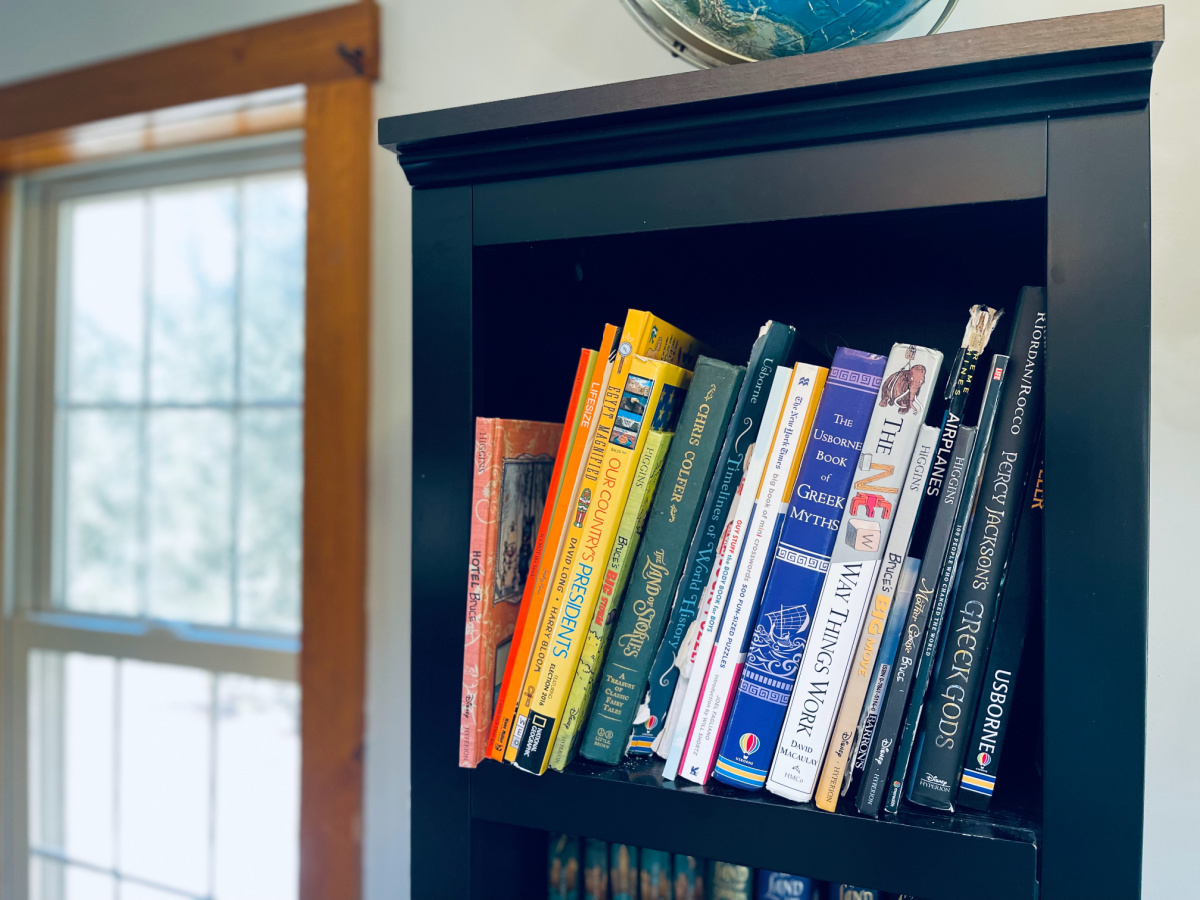
Not Necessary, But Nice-to-Have: Reference Books
We can all agree that a complete encyclopedia set is a thing of the past.
In our homeschool, we heavily rely on the internet as our go-to resource for finding answers to our random questions throughout the day.
However, I’ve found that having several beautiful reference texts on various subjects inspires reading and learning about core subjects. I keep the ones I pull out regularly, from human anatomy books to World Timeline books.
You could also add them to your morning basket, if that’s your thing. Or you could use them to supplement or enhance your regular studies.
Related: Usborne Homeschool Books Actually Worth Buying
Our favorite homeschool reference books are…
Usborne Science Encyclopedia
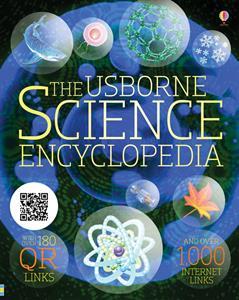
This one is our most used reference text. This science encyclopedia covers every scientific discipline, with amazing illustrations.
My kids love pulling it off the shelf to do a “science report” and to flip through it to learn random information.
Usborne Famous Composers Reference Book
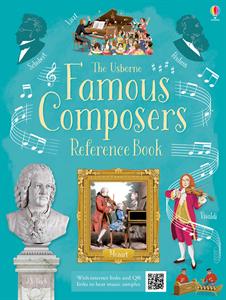
Music study is one of those “extras” for most homeschool moms.
You could use this reference text in a variety of ways – just have it on the shelf, available for everyday reading, or add it to your morning basket and read about one composer a day.
Usborne Children’s Book of Art
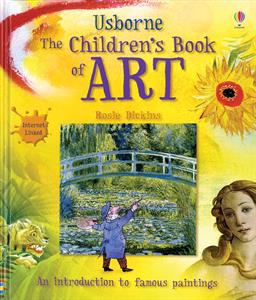
Another easy thing to miss is art appreciation and famous painting recognition. Adding this book to your bookshelf or morning basket is an easy way to add homeschool art appreciation to your days.
Warning: there are famous paintings and sculptures of naked men and women included in this book ( ). If that’s something you aren’t o.k. having in your home, I would avoid this one. If you do get it, be prepared for questions!
Our Country’s Presidents: A Complete Encyclopedia of the U.S. Presidency
I love this book as a U.S. History supplement. It offers timelines, noteworthy achievements and failures, and famous images for each president.
This edition includes President Barak Obama.
Usborne Short History of the World
This is a recent addition to our book shelf, mostly inspired by one of my children’s lack of interest in Story of the World. We’re loving it so far!
Hopefully, this book will prepare them for the Story of the World series when they are ready or interested.
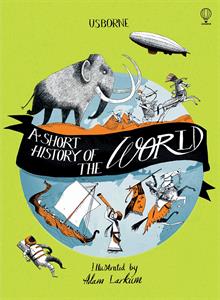
Usborne Timelines of World History
We live in a very small house with no dedicated homeschool room, so I prefer not to have a timeline strung up on my wall.
While Story of the World is great, even I have trouble keeping track of where we are on the history timeline when the author jumps to other regions of the world in the same time period we just read about in the last chapter (or even before the previous chapter).
This book helps us keep it all straight without a wall timeline.
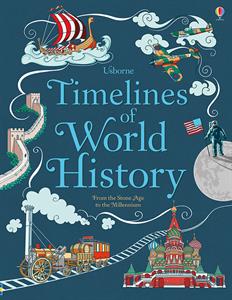
Lonely Planet Kid’s Amazing World Atlas
Every family who homeschools should have a quality atlas. I chose this one based on recommendations of other homeschoolers, and I was not disappointed!
Filled with amazing photography and interesting stories and cultural information, this atlas is helpful for both geography and social studies. We love flipping through and looking at random facts about various countries and regions.
We have another geography book called Maps, which we also enjoy, but Maps only covers so many countries. The Lonely Plant Kid’s Atlas is a more traditional atlas covering every major geographic region.
The 50 States
An excellent companion to the above-mentioned World Atlas, this is an absolutely beautiful guide to the fifty states (plus Washington, D.C.).
Each map includes fun facts and major landmarks. A guide to the state flags and U.S. Presidents is also included.
Every state also features an introduction, key facts such as the capital and state bird, famous people connected to that state, significant dates and events in the state’s history, and a spotlight on a particular region or city.
Usborne Book of Greek Myths
If you plan on covering Greek mythology at all, you’re not going to want to miss this beautifully illustrated Usborne Book! It includes 32 retellings of the most common Greek myths, including “Pandora’s Box” and “Jason and the Golden Fleece.”
In addition, the index includes illustrated maps of Ancient Greece and a huge reference guide to the gods, heroes and monsters.
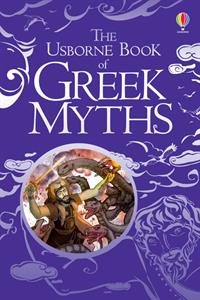
What are your must-have homeschool supplies? What’s missing from this essential homeschool supply list? Share in the comments!
Read Next: 30 Easy Homeschool Lunch Ideas Kids Can Make Themselves

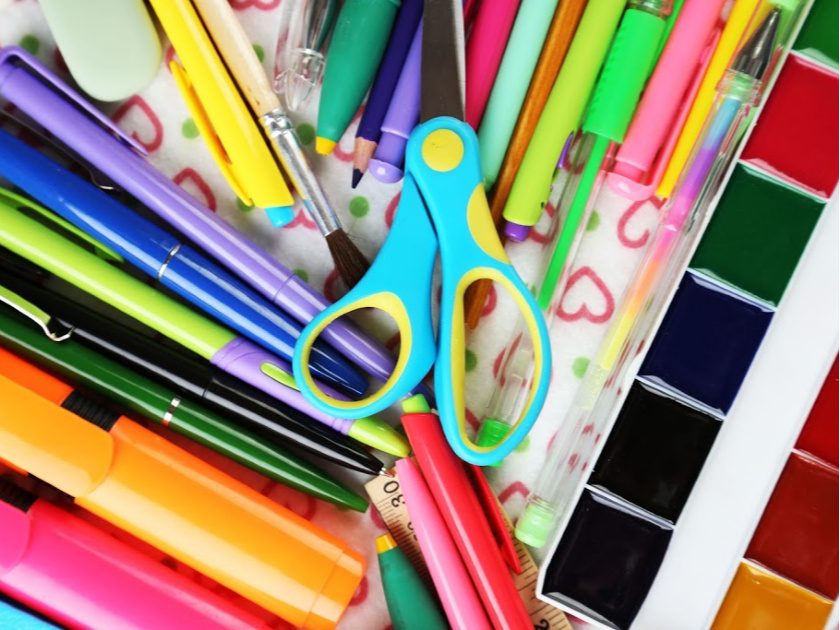
Help! I tried downloading the list but when i try to open the file, it says cannot open file! I iam basically working from my phone until I get internet set up out here (just moved!) So maybe the file doesn’t like my phone? This is our first year, and I’m so glad I chose to homeschool! My son who is supposed to be in fourth grade was struggling, so I had him do some placement tests I found on MobyMax. His scoring fell in the second grade in math,reading, and language arts 😳…we have some major gaps to fill, and I want to be ready and organized.
Hi Jennifer! I’m not sure why the file isn’t working. If you still need one, you can email at thissimplebalance @gmail .com and I can send you a copy directly. Thanks!
I can’t seem to find the printable checklist mentioned to be at the end of the post?
Hi Linda! I just added it at the very end of the post. If you click the link, it will download automatically. Thanks for pointing that out!
This was very helpful! Some of these things I hadn’t considered for my homeschool shopping list. Thank you!
You’re welcome Heather! Happy shopping.
As an absolute stationery addict I love this post. Back to school sales are my favourite time of year and I love the smell of new books and supplies 😍 this list is definitely getting saved for when the sales start thank you for writing it.